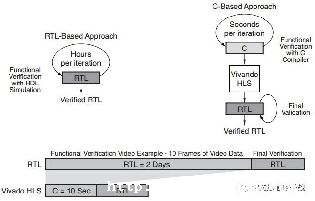

原发布者:shimingtime
C语言输入输出函数有很多,标准I/O函数中包含了如下几个常用的函数:
scanf,printf,getc,putc,getchar,putchar,gets,puts,fgets,fputs,fgetc,fputc,fscanf,fprintf等.

int
getc(FILE
*fp)
getc主要是从文件中读出一个字符.常用的判断文件是否读取结束的语句为
(ch
=
getc(fp))
!=
EOF.EOF为文件结束标志,定义在stdio.h中,就像EXIT_SUCCESS,EXIT_FAILURE定义在stdlib.h中一样,文件也可以被理解为一种流,所以当fp为stdin时,getc(stdin)就等同于getchar()了.
putc(int
ch,FILE
putc主要是把字符ch写到文件fp中去.如果fp为stdout,则putc就等同于putchar()了.
getchar(void)
getchar主要是从标准输入流读取一个字符.默认的标准输入流即stdio.h中定义的stdin.但是从输入流中读取字符时又涉及到缓冲的问题,所以并不是在屏幕中敲上一个字符程序就会运行,一般是通过在屏幕上敲上回车键,然后将回车前的字符串放在缓冲区中,getchar就是在缓冲区中一个一个的读字符.当然也可以在while循环中指定终止字符,如下面的语句:while
((c
getchar())
'#')这是以#来结束的.
putchar(int
ch)
putchar(ch)主要是把字符ch写到标准流stdout中去.
char
*
gets(char
*str)
gets主要是从标准输入流读取字符串并回显,读到换行符时退出,并会将换行符省去.
puts(char
puts主要是把字符串str写到标准流stdout中去,并会在输出到最后时添加一个换行符.
*fgets(char
*str,
num,
FILE
str是存放读入的字符数组指针,num是最大允许的读入字符数,fp是文件指针.fgets的功能是读一行字符,该行的字符数不大于num-1.因为fgets函数会在末尾加上一个空字符以构成一个字符串.另外fgets在读取到换行符后不会将其省略.
fputs(char
file
fputs将str写入fp.fputs与puts的不同之处是fputs在打印时并不添加换行符.
fgetc(FILE
fgetc从fp的当前位置读取一个字符.
fputc(int
ch,
fputc是将ch写入fp当前指定位置.
fscanf(FILE
*fp,
*format,
输入列表)
fscanf按照指定格式从文件中出读出数据,并赋值到参数列表中.
fprintf(FILE
输出列表)
fprintf将格式化数据写入流式文件中.
数据块读写函数
fread
(buffer,size,count,fp);
fwrite(buffer,size,count,fp);
参数说明:
buffer:是一个指针.
对fread
来说,它是读入数据的存放地址.
对fwrite来说,是要输出数据的地址(均指起始地址).
size:
要读写的字节数.
count:
要进行读写多少个size字节的数据项.
fp:
文件型指针.
你说的那是数据结构吧
常用函数:
函数名: abs
功 能: 求整数的绝对值
用 法: int abs(int i);
程序例:
#include stdio.h
#include math.h
int main(void)
{
printf("number: %d absolute value: %d\n", number, abs(number));
return 0;
}
函数名: asctime
功 能: 转换日期和时间为ASCII码
用 法: char *asctime(const struct tm *tblock);
#include string.h
#include time.h
struct tm t;
/* sample loading of tm structure */
t.tm_sec = 1; /* Seconds */
t.tm_mon = 11; /* Month */
t.tm_yday = 0; /* Does not show in asctime */
t.tm_isdst = 0; /* Is Daylight SavTime; does not show in asctime */
/* converts structure to null terminated
string */
strcpy(str, asctime(t));
printf("%s\n", str);
函数名: bar
功 能: 画一个二维条形图
用 法: void far bar(int left, int top, int right, int bottom);
#include graphics.h
#include stdlib.h
#include conio.h
/* request auto detection */
int gdriver = DETECT, gmode, errorcode;
int midx, midy, i;
/* initialize graphics and local variables */
initgraph(gdriver, gmode, "");
/* read result of initialization */
errorcode = graphresult();
if (errorcode != grOk) /* an error occurred */
printf("Graphics error: %s\n", grapherrormsg(errorcode));
printf("Press any key to halt:");
getch();
exit(1); /* terminate with an error code */
/* loop through the fill patterns */
for (i=SOLID_FILL; iUSER_FILL; i++)
/* set the fill style */
setfillstyle(i, getmaxcolor());
/* draw the bar */
/* clean up */
closegraph();
函数名: calloc
功 能: 分配主存储器
用 法: void *calloc(size_t nelem, size_t elsize);
#include alloc.h
char *str = NULL;
/* allocate memory for string */
str = calloc(10, sizeof(char));
/* copy "Hello" into string */
strcpy(str, "Hello");
printf("String is %s\n", str);
/* free memory */
free(str);
函数名: clrscr
功 能: 清除文本模式窗口
用 法: void clrscr(void);
int i;
clrscr();
cprintf("%d\r\n", i);
cprintf("\r\nPress any key to clear screen");
cprintf("The screen has been cleared!");
函数名: cprintf
功 能: 送格式化输出至屏幕
用 法: int cprintf(const char *format[, argument, ...]);
/* clear the screen */
/* create a text window */
/* output some text in the window */
cprintf("Hello world\r\n");
/* wait for a key */
① continue跳出本次循环,进行下一次循环注意continue只能针对for循环和while循环, 不能针对switch选择语句,除非switch语句嵌套在for或者while循环中
①.0. scanf() 获取用户输入
①.1. getchar() 获取用户输入中的字符
函数:
①call 调用
指针:
① pointer 指针
常用词汇:
①.、short:修饰int,短整型数据,可省略被修饰的int.
①.0、goto:无条件跳转语句.
①.1、if:条件语句,后面不需要放分号.
①.、int isalpha(int ch) 若ch是字母('A'-'Z','a'-'z'),返回非0值,否则返回0.
c库函数
①数学函数.math.h
......
以上就是土嘎嘎小编为大家整理的c语言中的常用函数相关主题介绍,如果您觉得小编更新的文章只要能对粉丝们有用,就是我们最大的鼓励和动力,不要忘记讲本站分享给您身边的朋友哦!!